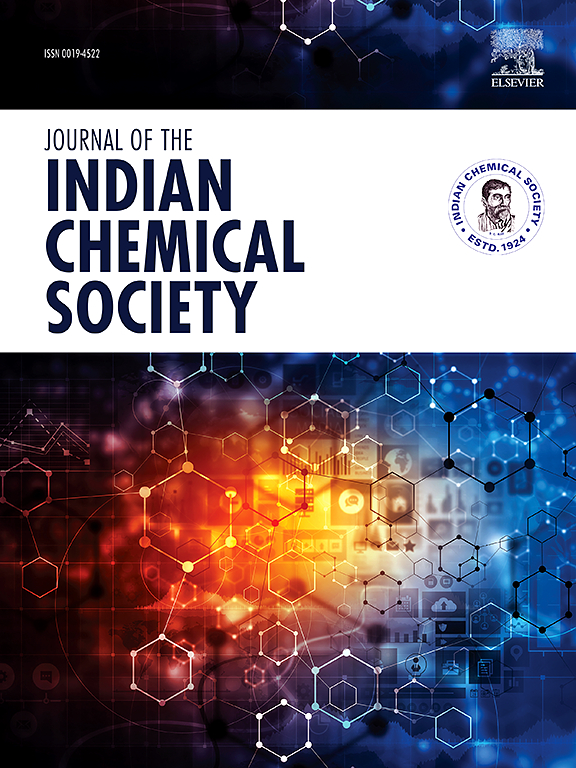Hydrothermal synthesis of Co, Cu dual doped CeO2 based nanoceramic electrolyte material and evaluation of its physical, electrochemical and dielectric properties for LTSOFC
IF 3.2
4区 化学
Q2 CHEMISTRY, MULTIDISCIPLINARY
引用次数: 0
Abstract
Co, Cu dual doped ceria nanoceramic electrolyte material with the composition of Ce0.50Co0.25Cu0.25O2-δ (CCCO) was synthesized by a simple hydrothermal route using stoichiometric amount of metal nitrates with sodium hydroxide precipitant. The properties of the prepared nano-ceramic particles were systematically evaluated by TGA, XRD, FTIR, EDAX, SEM and TEM. The XRD data confirmed the formation of FCC structure. FTIR data revealed the existence of M − O band in the sample. SEM and TEM photographs showed the manifestation of nano-grains in the sample. Presence of appropriate elements with atomic weight % was confirmed by the EDAX data. The circular sintered CCCO disk components were subjected to impedance and dielectric studies from room temperature to 540 oC in air. The oxide ion conductivity for the electrolyte was enhanced systematically from room temperature and attained a maximum value of 6.4583x10-4 Scm-1 at 540 oC. The activation energy was found to be 0.40 eV at the optimum temperature (540 oC). The dielectric constant of the sintered specimen was slowly enhanced with raise in temperature at varied frequency ranges. From the results, it was found that the proposed composition may be a better choice as an alternate electrolyte material for low temperature solid oxide fuel cell (LTSOFC) application.

求助全文
约1分钟内获得全文
求助全文
来源期刊
CiteScore
3.50
自引率
7.70%
发文量
492
审稿时长
3-8 weeks
期刊介绍:
The Journal of the Indian Chemical Society publishes original, fundamental, theorical, experimental research work of highest quality in all areas of chemistry, biochemistry, medicinal chemistry, electrochemistry, agrochemistry, chemical engineering and technology, food chemistry, environmental chemistry, etc.

 求助内容:
求助内容: 应助结果提醒方式:
应助结果提醒方式:


